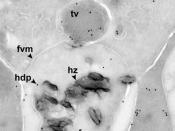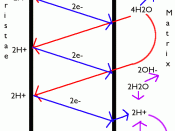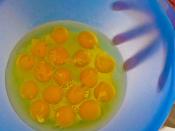Energy transfer is involved in all cellular activities. In fermentation, the cells produce two adesine triphosphates as well as a by-product, carbon dioxide, and NAD+. Fermentation is the process of creating ATP for the cell in the absence of oxygen. This is possible because glycolysis uses no oxygen, it simply generates a net gain of two ATP while converting glucose to two molecules of pyruvic acid and reducing NAD+ to NADH. This means that the cell can continually go through glycolysis to make more energy, as long as there is a supply of glucose and NAD+. Because glycolysis itself does not make NAD+, rather uses them up and reduces them to NADH, cells have a way to constantly replenish its source of NAD+. In fermentation, the two NADHs produced from glycolysis are oxidized back into NAD+, meaning the process of glycolysis can start over again.
The down side is that it is extremely inefficient, using only two percent of glucoseÃÂs potential energy, as well as creating an unwanted by-product in the process, such as ethanol or lactic acid.
The process of active transport in a cell also expends energy. Endocytosis and exocytosis is the use of a transport vesicle. In endocytosis, the substance moves towards the cell membrane and is then engulfed by the membrane, forming a transport vesicle. Exoctyosis is the exact opposite; the substance that is to be leaving the cell is transported to the membrane in a transport vesicle, then the membrane of the vesicle fuses with the cell membrane and the substance leaves the cell. The process of endocytosis, exocytosis, and pump all require the use of energy, or ATP, in order for it to occur.
Chemiosmosis also requires the expending of energy. Chemiosmosis is the production of ATP using the energy of hydrogen-ion, or H+, gradient across the membranes to phosphorylate ADP, which powers most ATP synthesis in cells. In order for it to start, the cell must pump H+ ions into the innermembrane of the mitochondria to create a concentration gradient. The main purpose of chemiosmotic phosphorylation is to produce ATP.



